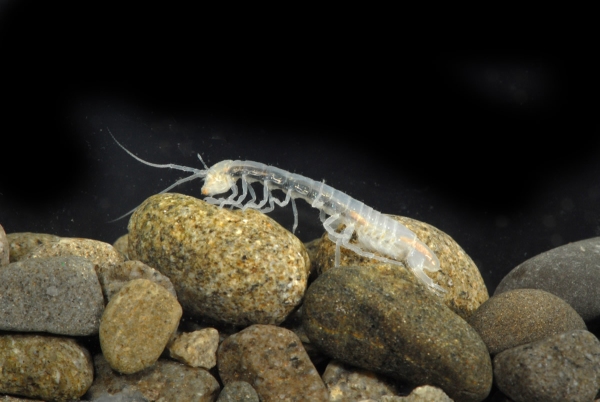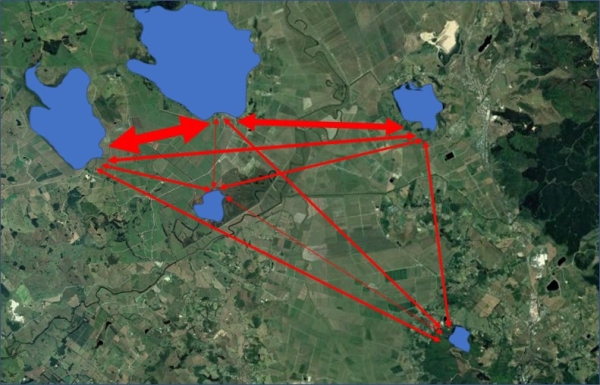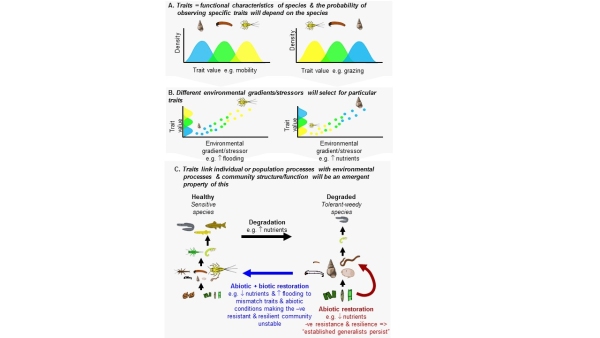NIWA is a key contributor to the National Science Challenge on Biological Heritage hosted by Landcare Research.
New Zealand’s Biological Heritage, is one of 11 important national priority areas for research. The science challenge involves all other New Zealand’s CRI’s and Universities, Department of Conservation and Ministry for Primary Industries as partners. The challenge is to “Reverse the decline of New Zealand’s biological heritage, through a national partnership to deliver a step change in research innovation, globally leading technologies and community and sector action” and covers both terrestrial and freshwater environments.
Within the science challenge, there are three research programmes that focus on assessing our biological heritage, reducing risks and threats, and sustaining and restoring ecosystems. NIWA projects on our groundwater, biosecurity network interventions and functional traits to achieve stream restoration contribute directly to each of the three programmes. Additional Strategic Science Investment Fund projects on freshwater biosecurity, freshwater plant conservation, freshwater fish and periphyton communities are aligned with the challenge.
What's in our groundwater?
Graham Fenwick leads a project which aims to quantify the poorly understood biota associated with aquifers. A combination of microbial slime layers and small invertebrates (some up to 25 mm long) have a critical role in maintaining groundwater quality for human uses.
The project aims to identify the different populations of these very important creatures that are present in three regions (Nelson, Canterbury, Hawke’s Bay), seven catchments, and varying land use situations. They are as much a part of our biodiversity as kiwi or kauri trees, yet many of these organisms will be new to science, and so this project will create a reference database.
The recent breach of the Havelock North water supply has alerted New Zealanders to the vital importance of maintaining the health of our aquifers. It is an increasingly precious resource that must be managed carefully to sustain its valuable “ecosystem services” and groundwater quality.
Biosecurity network interventions
Paul Champion and Mary de Winton are collaborating with the project leader, Professor Phil Hulme of Lincoln University, in determining how to intercept damaging freshwater pests as they disperse within New Zealand. It is recognized that recreational water-users are the main vectors of inter-catchment spread, but there’s little information on the routes for spread and importance of these.
A PhD student (Isabelle de Lange) has been engaged to research recreational water-users’ networks, utilizing NIWA’s resources on pest distribution and pest risk assessment, along with other information obtained from water body users.
The project will explore pathways and mechanisms of spread within lake networks. A modelling approach will use data on the number of individuals moving between different waterbodies (attractiveness) and the distance travelled by water body users as a measure of the dispersal effect of pests resulting from human activity (propagule pressure). This, together with a hydrological model detailing the interlinking network of water bodies, will be used to forecast the strength of dispersal paths that can then be implemented into management strategies and intervention plans.
Reigniting healthy resilience: Using functional traits to achieve stream restoration
Elizabeth Graham is collaborating with the project leaders, Catherine Febria and Helen Warburton of Canterbury University, to understand why biological recovery lags behind improvements in water quality and habitat resulting from stream and river restoration.
This project will address this wide scale biodiversity challenge by investigating how functional traits (e.g., body flexibility, mobility, feeding modes, reproductive rate, and size) can be used to overcome negative resistance/resilience in freshwater ecosystems. The project will test the hypothesis that resistance to restoration is a consequence of degraded communities becoming dominated by species with traits which enhance food web stability (e.g., trophic generalism); highly stable food webs in turn have high negative resistance and resilience. Consequently, restoration actions that address both the abiotic and biotic components of restoration are required.
Key components of the project include development of a resistance-resilience restoration framework and development of the NZ functional traits database. Upcoming work includes mesocosm trials to identify traits associated with negative resistance and traits associated with desirable species (i.e. threatened and taonga species) and in-stream experiments using a combination of treatments to simulate disturbance and trait re-introductions to test whether restoration “resistance” can be overcome.







